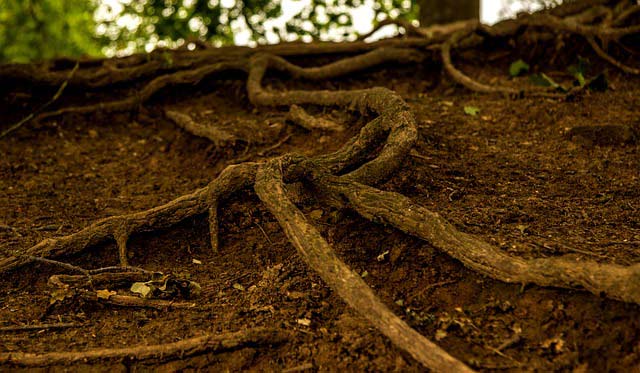Got root rot? It’s not an easy question to answer… It’s not like you can just take a quick peek at all those roots buried deep within the earth. And although there are some above ground symptoms, including dying leaves, it’s difficult for homeowners to discern the (excuse our pun) root of the problem. We can help.
Take it From the Top
One of the first signs of root rot can be found in the canopy. Leaves of trees will appear “drought stressed,” which means sometimes turning dull green, yellow, red, or purple as they wilt. As time goes on, infected trees may survive a few years before the disease kills the whole plant. You might notice the bark around the soil-line darkening. And after cutting away some bark should reveal red-brown discoloration in the wood underneath it. Trees that do not thrive after planting or quickly develop reddish-brown needles or leaves and exhibit dieback should be checked for root rot.
Trees that are especially susceptible include oak, dogwood, and most Christmas tree species (i.e. true firs, Douglas-fir, spruce, and eastern white pine) are highly susceptible.
IPM Can Help
At Good’s Tree and Lawn Care, we take an Integrated Pest Management (IPM) approach to protect trees on our clients’ properties against root rot and other common problems. IPM is designed to make certain we achieve our goal of suppressing pest problems while minimizing negative environmental impacts.
The Good’s Tree Care Insect and Disease Management Program employs a suite of cultural practices including inspections and well-timed applications with the goal of maintaining plant health while at the same time minimizing environmental impacts. Some things that might be included in this strategy are:
- Improving water drainage. Prior to planting, make amendments to the soil composition to help manage drainage away from tree roots. Don’t allow water to pool around the collar or root system. Core aerate to improve drainage and lessen compaction.
- Raising the planting site to avoid poor drainage and prevent pools of standing water from forming around valuable ornamentals. Plant on mounds of soil. Never plant trees deeper than they were planted at the nursery.
- Separating plants, shrubs, and trees according to their irrigation needs, and avoid overwatering.
- Removing soil. If the soil has been piled up over the crown, remove it carefully to expose root flare. This is where the fungal infection is likely to occur.
- Planting resistant or less susceptible varieties. Consider replanting with tolerant plants after rot has been diagnosed. Trees that are tolerant to Phytophthora root rot include white cedar and American arborvitae.
A healthy root system should spread out through the top of the earth in which the tree is planted. A root needs water and oxygen to thrive and they get these essentials through straight growth. If you suspect your trees are suffering from root rot, or if you just can’t seem to keep them thriving, we can help. Contact us today to diagnose and mitigate any potential issues with your soil or your root system.


